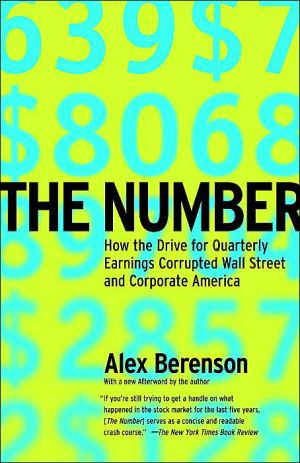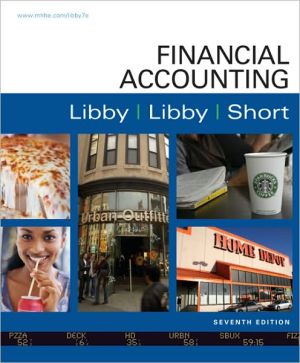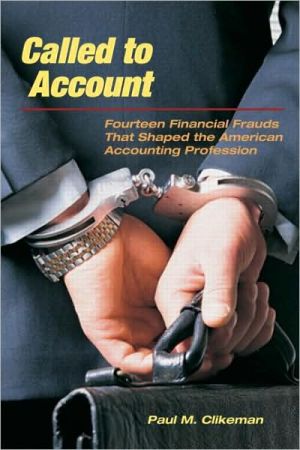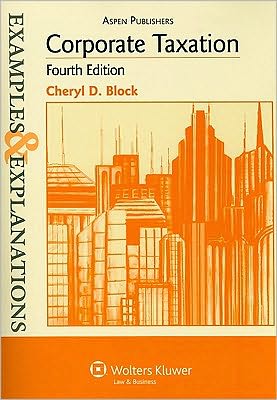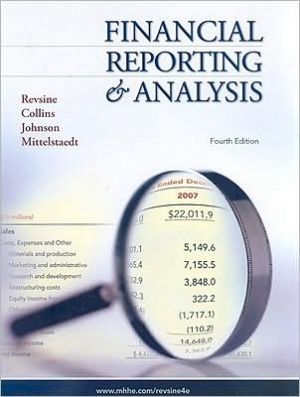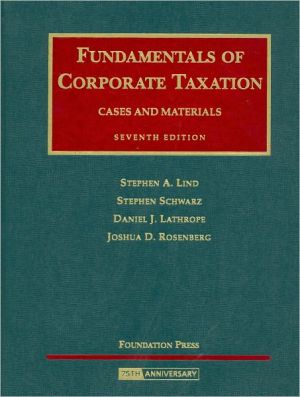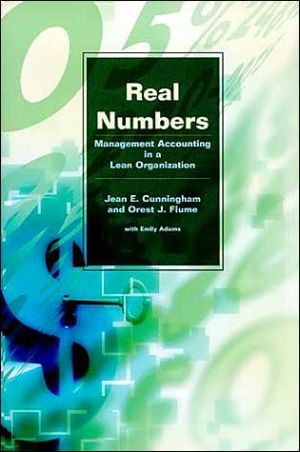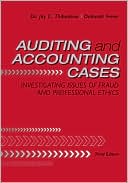The Number: How the Drive for Quarterly Earnings Corrupted Wall Street and Corporate America
With a new Afterword by the author and a new Foreword by Mark Cuban\ In this commanding big-picture analysis of what went wrong in corporate America, Alex Berenson, a top financial investigative reporter for The New York Times, examines the common thread connecting Enron, Worldcom, Halliburton, Computer Associates, Tyco, and other recent corporate scandals: the cult of the number.\ Every three months, 14,000 publicly traded companies report sales and profits to their shareholders. Nothing is...
Search in google:
In this commanding big-picture analysis of what went wrong in corporate America, Alex Berenson, a top financial investigative reporter for The New York Times, examines the common thread connecting Enron, Worldcom, Halliburton, Computer Associates, Tyco, and other recent corporate scandals: the cult of the number. The Washington Post Alex Berenson, a whip-smart New York Times business reporter, is the wisecracking play-by-play commentator. In The Number, he offers a compelling account of how many large-number corporations went astray in the late 1990s. — Daniel Gross
Chapter 1\ BOOM AND BUST\ It had been a very long week for J. P. Morgan Jr.\ Morgan—the world's leading financier, the personification of Wall Street—had endured days of testimony before the Senate Banking and Currency Committee about his firm's misbehavior during the 1920s boom and the crash that followed. Under pointed questioning by Ferdinand Pecora, a hard-charging New York prosecutor who was the committee's chief counsel, Morgan admitted that he and many of his partners had not paid any taxes in 1931 and 1932, with the Depression at its worst. He acknowledged that earlier, at the height of the bubble, his firm had offered government officials the chance to buy shares in a hot new company at a below-market price. With 25 percent of all Americans unemployed, with banks failing and farmers starving, these revelations did not elicit great warmth. A generation later, The New York Times would call the inquiry "remarkable for its unfriendliness even in that year of bankers' general unpopularity." [1]\ That year was 1933. And on the first day of its sixth month—Friday, June 1—at 10 A.M., in a Senate hearing room crowded with reporters and photographers, Morgan and his aides waited for another difficult day to begin.\ Then the midget showed up.\ The reason Lya Graf came to the Senate that day has been lost to history. Her employer, the Ringling Brothers and Barnum & Bailey Circus, was in town, but Graf had no obvious reason to make her way to the Capitol. Perhaps Ringling was looking for some easy publicity; a Ringling press agent named Charles Leef had accompanied her. Perhaps she just wanted to see Morgan in the flesh. If so, both circus and midget got their wishes. Ray Tucker, a reporter for the Scripps-Howard news service, saw Graf in the crowd outside the hearing room and pulled her in. "I'm going to introduce you to J. P. Morgan," Tucker said. And he did. Photographers swarmed and reporters rushed to capture every word of the not-very-interesting conversation between Morgan and Graf (Morgan: "I have a grandson bigger than you." Graf: "But I'm older.") Then Leef, the press agent, picked up Graf and popped her onto Morgan's lap.\ In pictures of the incident, Morgan looks stunned and Graf amused, her arms spread wide [2]. Richard Whitney, the president of the New York Stock Exchange and a Morgan flunky, quickly sent Graf off, and Morgan recovered his composure.\ But he could not recover his reputation. In a moment he was transformed from a powerful plutocrat to a confused old man. It is impossible to imagine Morgan's father, the original J.P., who had been America's central banker before America had a central bank, being caught in a similar indignity. Morgan Sr. ended market panics, steadied the economy, and saved Wall Street from itself; he did not truck with midgets, or senators. Morgan Jr. could not stop the crash of 1929 or end the Depression. He had tried and failed. For that Morgan might have been forgiven—the economic crisis was too big for any private citizen to fix—but he and his well-paid factotums had failed in a second, inexcusable way. They had failed to understand how serious the Depression had become and how much America now distrusted financiers and big business. And so Morgan and the rest of Wall Street's Old Guard had become nearly irrelevant to the bitter national debate over how to save capitalism from itself. Commentators wrote later that the incident had "humanized" Morgan, as if a man who treasured power and discretion, whose firm did not advertise or even put its name on its front door, wanted to be humanized. As if humanization was not the ultimate embarrassment.\ A midget sat on J. P. Morgan's lap. It would be two generations before Wall Street and corporate America again ran so far amok during a boom or were so badly humiliated in the bust that followed.\ A few years before that Friday morning, the nation's attitude toward Wall Street had been very different. In Once in Golconda, John Brooks summed up the peak of the frenzy as well as anyone ever has, in words eerily familiar today:\ Let us try, as best we can, to look at Wall Street as it was in August 1929, to catch its essentials....Newcomers have arrived in great numbers. They are men and women who are sacrificing their own vacations, or else have simply chucked their jobs, to spend their days sitting, or more likely standing, in the brokerage customers' rooms watching the quotation board report the glorious news....\ Many of those now crowding Wall Street have burned their bridges. They have thrown over their jobs on reaching some predetermined goal, a paper net worth of $50,000 or $100,000 or $200,000; they have bought expensive houses and mink coats for themselves or their wives, and look forward to lives of leisure and affluence....\ All through the days, and long into the evenings, the talk, talk, talk goes on. There are tales of fortunes just made and of fortunes about to be made—above all, talk of fortunes.... There is talk about John J. Raskob's article in that month's Ladies' Home Journal entitled "Everybody Ought to Be Rich...."\ On the seventeenth the Ile de France and the Berengaria depart on transatlantic trips, the former eastward and the latter westward, each fully equipped for speculation with floating brokerage offices; when the Berengaria arrives in New York six days later, passengers tell of how every day the office on the promenade deck has been so mobbed that quotations had to be passed by word of mouth to passengers who couldn't get near enough....\ The madness had been a decade in the making. From a low of 63.90 in 1921, in the deep recession that followed the Great War, the Dow Jones industrial average had climbed steadily higher. By 1925 the Dow had more than doubled. After a pause in 1926, it leaped ahead again, finally reaching 381.17 on September 3, 1929. In eight years the Dow rose sixfold, by far the greatest gain in the history of the index up to that point.\ In the generations since, economists and financial historians have exhaustively parsed the boom. Most have agreed broadly on its causes, from easy margin requirements that encouraged speculation to technological advances that spurred economic growth and brought electricity and cars to millions of Americans.* [*Essentially, an investor who buys on margin is borrowing part of the purchase price from his broker. If the stock rises, the investor's gains are multiplied, but if it falls even a little, the investor can face a "margin call" and be forced to put up more cash as collateral. If he can't, the broker can sell the stock—without the investor's consent—and use the proceeds to repay the loan. As a result, heavy margin borrowing can worsen market crashes, because it can result in forced selling at times when stocks are already falling.] But there was at least one more factor in the decade-long rally, one less widely discussed. When the bull market began, stocks were cheap.\ In the early 1920s, prudent investors usually stayed away from stocks, buying bonds instead. Many investors viewed the New York Stock Exchange and its weaker cousin, the Curb Exchange, as little more than casinos. And they were right to be cynical. Trading on inside information was common, and stock manipulation widespread; stock prices would swing wildly on rumors of "bear raids" and "short squeezes."*[ *Short-sellers borrow stock and sell it, hoping to buy it back later for a lower price and profit from the decline. A short squeeze occurs when many shorts are simultaneously forced to return the stock they have borrowed, or "cover" their short positions. If there are not enough shares outstanding for the shorts to close out their positions, they can be forced into a ruinous bidding war for the few shares of stock that are available. In a full-blown squeeze, a stock's price can rise 50 or 100 points in a day.] "All the bubble blowers of other days, the moonshine promoters, green goods, and shell game men, financial pan-handlers and wildcat exploiters, and skin-game fakers...are now engaged in the stock selling game," a Pennsylvania congressman thundered in 1919. [3]\ Nor could investors expect much protection from the authorities. State regulation was minimal; despite the congressional bluster, federal laws against stock manipulation hardly existed. The New York Stock Exchange, popularly known as the Big Board, functioned more or less as a private club, following its rules sporadically—usually when their enforcement would benefit its members. Even the press, that beacon of democracy and fair play, could not be trusted. Financial reporters from The Wall Street Journal and The New York Times were later discovered to have taken hundreds of thousands of dollars in bribes in return for pumping stocks in print. [4]\ "Nearly all of those who traded in stocks frankly called themselves speculators," Benjamin Graham, the first and greatest stock analyst, wrote of the era in his memoirs. "They did not draw too fine a distinction between their financial operations and racetrack or other betting." [5] In fact, Graham recalled drolly, before the 1920s brokerage firms routinely handled bets on the outcome of presidential elections for their clients, but "this genial practice was outlawed some years later when the stock exchange went all out for respectability."\ A dearth of reliable financial information about companies contributed to the market's anything-goes nature. A few years before, Morgan Sr. had bemoaned the day when "all business will have to be done with glass pockets." [6] He need not have worried. The attitude of bankers and executives was that investors should cash their dividend checks and keep their questions to themselves. (In 1899, Henry Havermeyer, the president of the American Sugar Refining Company, was asked if he thought that corporations had the right to "offer stock to the people—to the whole community—and that the community then has no right to a knowledge of what the earning power of the stock is." In the best nineteenth-century robber-baron style, Havermeyer replied, "Precisely.")\ The Big Board did not even require the companies it listed to report their profits to investors. It did make companies provide shareholders with a balance sheet listing assets and debts at least once a year.*[ *Balance sheets and income statements are the two most important pieces of financial information available to a company's shareholders. The balance sheet explains a company's overall financial health. It reveals how much cash is available, the overall value of the company's assets, and how much of that value is available for shareholders after subtracting the company's debts and other liabilities. The income statement explains how much money the company has made or lost over a specific period of time—usually either three months or a year. It details sales and expenses, which are generally broken into several categories, including taxes, interest, and overhead costs. What's left is the profit—or loss—available to shareholders for the period. For more information on balance sheets, see Appendix 2.] Most companies went beyond that minimum, putting out an income statement at least once a year. But they often took the notion of an income statement quite literally, telling shareholders how much money they had made or lost—and nothing more. At least one company, Pocahontas Fuel, offered investors only its balance sheet. Fewer than half the companies on the Big Board provided shareholders with full financial statements, including sales, interest costs, dividends and taxes paid, and one-time gains and losses. [7]\ "It is not an exaggeration to say many corporate executives and investment bankers elevated opacity to a hallowed business principle," a trade group of financial analysts would later complain. "Information, such as it was in businesses beyond the railroads, was guarded jealously and understood to be emphatically private. Good information was almost by definition 'inside' information." [8]\ So it is no surprise that many investors avoided stocks entirely as the 1920s began. But not every stock was rigged, and most companies were not frauds. The market's grime hid spectacular bargains in first-rate companies like U.S. Steel, which had been profitable and paid regular dividends through good years and bad. Their prices look almost absurdly low today.\ The most basic measures of stock valuation are the dividend yield and the price-earnings (P/E) ratio. The dividend yield measures how much cash a shareholder receives each year, relative to the price of a share of stock. For example, if General Motors trades for $100 and pays an annual $4 dividend, G.M. has a dividend yield of 4/100, or 4 percent. The P/E ratio compares the price of a share to annual profits per share. If G.M. made $8 a share last year, it has a price-earnings ratio of 100/8, or about 12.5.\ P/Es and dividend yields rise and fall with interest rates, economic growth, and investor confidence. But in general, low P/E ratios and high yields are a sign that stocks are cheap compared to alternative investments like bonds or real estate. Over the last century the average P/E of big American stocks has been about 15, and the average yield 4 percent. But that average figure has masked wild swings, and P/Es have rarely been lower, or yields higher, than they were in the early 1920s. General Electric, paying a dividend of $12 a share in 1921, could be had for $110, a yield of 11 percent. Overall, at a time when high-quality bonds paid 5 percent, the market's P/E ratio was below 10, and its dividend yield above 6 percent. [9]\ With bargains like that at a time when the economy was growing solidly and inflation was quiet, stocks were all but certain to rise.\ Rise they did, haltingly at first, then with increasing confidence as the decade progressed. And as companies like General Motors and Radio Corporation of America reported soaring sales and profits, investors realized something exciting about stocks that they had hardly understood before. As the economist Edgar Lawrence Smith explained in a 1924 book, Common Stocks as Long-Term Investments, a stock was not just a junior-grade bond that needed to pay a high dividend to compensate investors for its extra risk. Bonds paid fixed interest rates. But dividends on a stock were not fixed. They could rise as a company expanded and became more profitable. Bonds might offer safety, but stocks offered growth. In fact, if a company was growing quickly, it might be to shareholders' advantage to accept a low dividend now so that the company could reinvest its cash in its business and make much more money later.\ Other economists and academics, such as Yale's Irving Fischer, seconded Smith's optimistic view. And investors saw for themselves how quickly companies could grow in a strong economy. Between 1915 and 1926, profits at the Computing-Tabulating-Recording Company (which later would change its name to International Business Machines) rose from less than $700,000 to $3.7 million, a fivefold increase. [10] C-T-R's dividend more than tripled, and its stock rose at a similar pace.\ "During the postwar period, and particularly during the latter stage of the bull market culminating in 1929, the public acquired a completely different attitude toward the investment merits of common stocks," Graham wrote in 1934, in the first edition of Security Analysis, his seminal work on stock valuation. (Graham, who at the time was managing money and teaching a class at Columbia University on investing, coauthored the seven-hundred-page book with David Dodd, a Columbia professor.) "The new theory or principle may be summed up in a sentence: 'The value of a common stock depends entirely upon what it will earn in the future.'" [11]\ NOTES\ 1. Sherwin D. Smith, "Thirty Years Ago: A Midget Sat on J. P. Morgan's Lap and Showed the Great Banker Was Only Human," The New York Times Magazine, May 26, 1963, p. 50.\ 2. Graf's story had a tragic ending. In 1935, tired of the publicity from her encounter with Morgan, she returned to her native Germany. Lya Graf was her stage name; her given name was Lia Schwarz. Half-Jewish and a midget, she was arrested by the Nazis in 1937 as a useless person. She died in the gas chambers at Auschwitz.\ 3. Vincent Carosso, Investment Banking in America: A History, Harvard University Press, 1970, p. 252.\ 4. Robert Sobel, The Great Bull Market: Wall Street in the 1920s, W. W. Norton & Company, 1968, p. 73.\ 5. Benjamin Graham, The Memoirs of the Dean of Wall Street, McGraw-Hill, 1996, p. 150.\ 6. Association for Investment Management and Research, From Practice to Profession: A History of the Financial Analysts Foundation and the Investment Profession, p. 13.\ 7. Benjamin Graham and David Dodd, Security Analysis, McGraw-Hill, 1934, pp. 44-45.\ 8. From Practice to Profession, p. 13.\ 9. B. Mark Smith, Toward Rational Exuberance, Farrar, Straus & Giroux, 2001, p. 76.\ 10. Benjamin Graham, The Intelligent Investor: Fourth Revised Edition, HarperCollins, 1973, p. 317.\ 11. Graham and Dodd, Security Analysis, p. 307.
\ The Washington PostAlex Berenson, a whip-smart New York Times business reporter, is the wisecracking play-by-play commentator. In The Number, he offers a compelling account of how many large-number corporations went astray in the late 1990s. — Daniel Gross\ \ \ \ \ The Los Angeles TimesRunning throughout Berenson's The Number is one constant theme: chief executives and other executives enriching themselves, more and more fabulously, at the expense of their companies and their shareholders. — Anthony Day\ \ \ The New York TimesBerenson, a business reporter for The New York Times, is on to something in selecting the quarterly earnings per share that public companies report to their stockholders as the single most important figure in the Wall Street game as it has come to be played. As he puts it, the earnings number ''burns brighter'' than all the endless bits of data, from housing starts to computer sales, that flash across the business press with a frequency more blinding than illuminating. — Rob Walker\ \ \ \ \ Publishers WeeklyIn the wake of Enron's spectacular implosion, the scandals surrounding the collapse of Tyco's stock price and revelations that WorldCom inflated its earnings by $9 billion, many wonder how independent auditors could have overlooked such huge discrepancies in financial records. Others ask how the SEC failed to spot corporate fraud and errors of the accounting firms on such a scale when reviewing the annual reports. New York Times reporter Berenson provides eye-opening answers to these and other equally disturbing questions in this hard-hitting and well-documented study. Against a background of the decline in independent investment research and the shift in client base for investment houses from individual investors to corporations, he charts the ascent of earnings per share-"the number"-to measure companies' health. As stock options became a major element in executive compensation and the consulting role of audit firms increased while the SEC neglected to pursue fraud on any major scale, Berenson argues, corporate executives' motives to manipulate "the number" met with a perfect opportunity to defraud unsuspecting investors, and many couldn't resist. His coruscating portrait of the boldness and reach of corporate fraud over the past five years is a clarion cry for reform. But his discussion of the SEC's shortcomings-due to lack of staff and budget in 2001, it could audit only 2,280 of the 14,000 annual reports received and has investigated a mere fraction of all allegations of fraud in corporations-shows the agency, created to protect investors from exactly what's happened, in the direst state of emergency. (On sale Mar. 4) Forecast: Individual investors and students of economic markets will be drawn to Berenson's wealth of detail and blistering attack on corporate greed and accounting firm complicity. The book's historical perspective and investigative stance should make it a classic of financial reporting on a tumultuous contemporary period in American financial history. Copyright 2003 Cahners Business Information.\ \ \ \ \ Library JournalWhat went wrong with Enron, WorldCom, and other corporations, and why did the bubble burst on the stock market in 2000? To answer that question, argues Berenson, we must understand "why the system as a whole failed, why accounting and financial reporting became criminally shoddy." To that end, Berenson, a New York Times investigative reporter, takes us back to the pre-Crash 1920s and continues through the decades of bull and bear markets leading up to the 2002 passage of the Sarbanes-Oxley bill, which authorized an increase in the SEC's budget and created a new accounting oversight board. In the process, he covers budget problems at the SEC, the decline in Wall Street research, the ethical collapse of the accounting industry, and the bull market of the 1990s. The author addresses possible accounting improvements and shows that for big companies accrual accounting might make more sense than cash accounting. All in all, this work will be of value to anyone who wants to understand why the economy has declined and will also provide thought-provoking reading for experts in the field. Highly recommended for both public and academic libraries.-Lucy Heckman, St. John's Univ. Lib., Jamaica, NY Copyright 2003 Reed Business Information.\ \ \ \ \ Kirkus ReviewsThe recent Wall Street meltdown and dot-bomb implosion may have taken ordinary investors by surprise, writes New York Times business reporter Berenson, but it was no news to the executives whose bad accounting and fraudulent ways nearly brought down the whole house of cards. Looking back a mere year, to March 2002, the author reminds us that "Osama bin Laden had hardly slowed the American economy. Dennis Kozlowski and Bernard J. Ebbers of WorldCom and Kenneth Lay of Enron brought it almost to a halt." But they were not alone, declares Berenson; a whole culture underlay the collapse, a culture of book-cooking and wishful thinking whose bottom line was the simple but generally unattainable goal of returning an on-paper profit every single quarter of every single year, regardless of economic reality. Tracing the economy’s boom-and-bust cycles over the last hundred years, Berenson does a fine job of showing how this idea and a host of smoke-and-mirrors accounting practices led to the latest bubble and its inescapable, if particularly devastating, pop, which demonstrated at least one bitter truth: that "most investment professionals do not know much more--either about the individual stocks they own or the broad market--than smart individual investors." Thus an apparently bulletproof market at the end of the Clinton years suddenly looked to be full of holes by the first year of Bush II. So ever it will be, Berenson suggests, so long as the market remains "obsessed with the number" and willing to overlook unpleasant realities such as product failure and the inevitable bad quarter in favor of pipe dreams and "whisper numbers." The sole bit of good news? "Bubbles and antibubbles, for lack of abetter word, have one thing in common: Neither lasts forever." Deserving of wide circulation in a time of corporate fraud and official look-the-other-way policy.\ \
